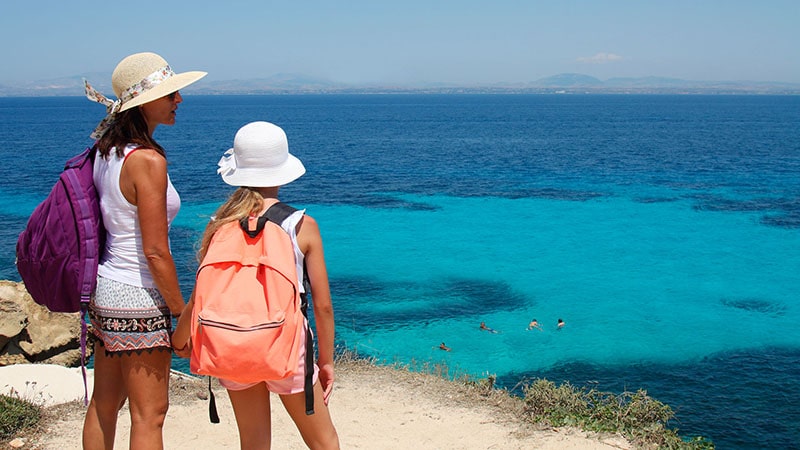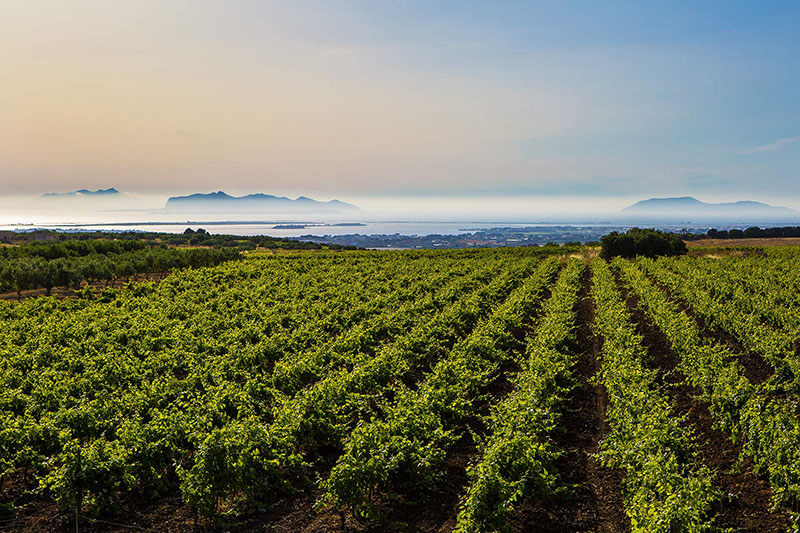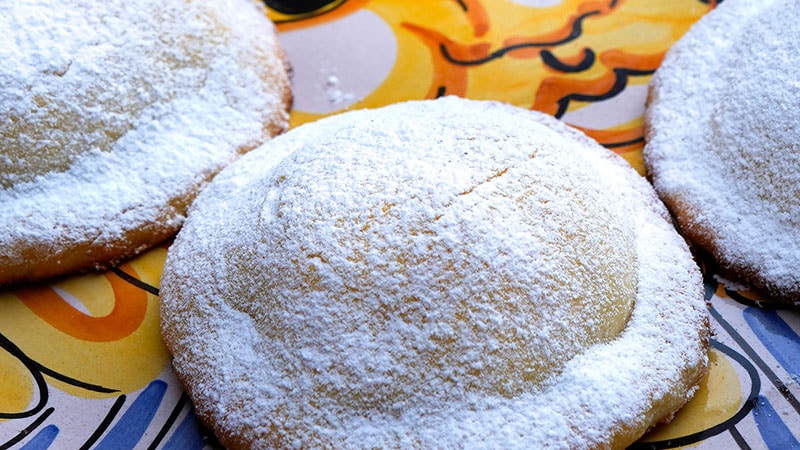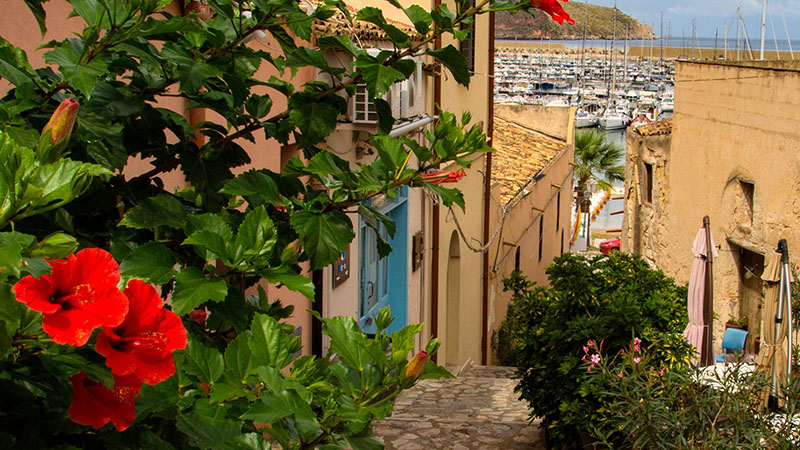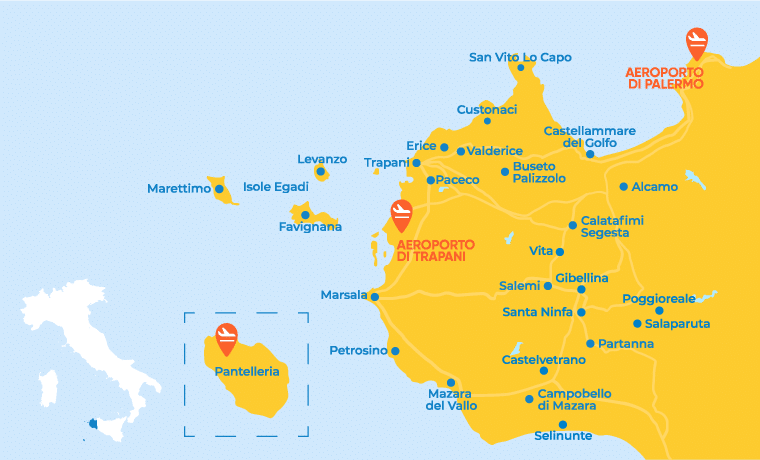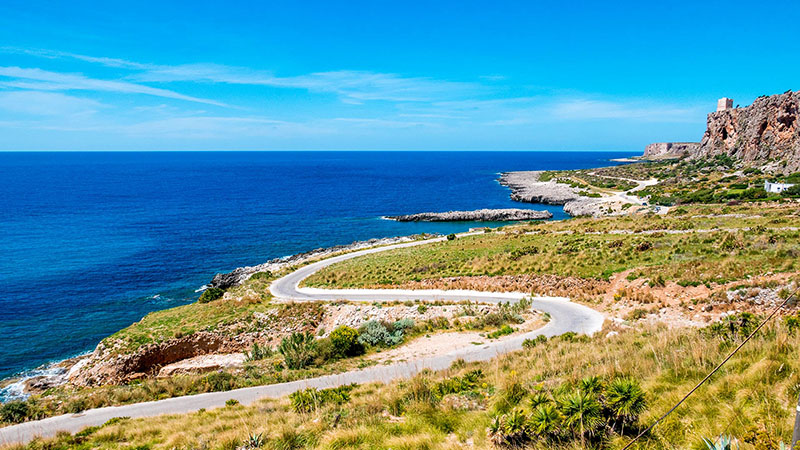A journey into taste: what to eat in Sicily
Beaches, culture, good food, but also adventure, emotions, and breathtaking landscapes. As a crossroads of cultural influences, Sicily is one of the most popular destinations for European and overseas tourists, especially when it comes to unique food and wine experiences. But what to eat during a vacation in West of Sicily?
Before we tell you, we want to warn you: once you taste certain delicacies, there’s no going back!
At each stop, the eastern part of the island offers unmissable specialties, a real journey within the journey to discover the typical dishes and products of the territory. A vast and varied culinary proposal, which also includes numerous Slow Food presidia.
Eating in Sicily: the top 10 must-try typical dishes
Sicilian cuisine is very rich and offers dishes that can satisfy everyone’s tastes, based on meat, fish, or vegetables. Let’s see a list of the absolute specialties to try during a trip to Western Sicily.
- Pane cunzato, a rustic food perfect to eat on the beach, made with homemade bread, tomato, olive oil, oregano, anchovies, and cheese, simple and delicious typical ingredients of the territory.
- Busiate with pesto alla trapanese, the typical pasta of the province of Trapani with a shape that resembles a rolled-up tube, seasoned with a sauce based on almonds, tomato, basil, garlic, and pecorino.
- Black bread of Castelvetrano, made with Tumminia wheat ground by stone and rigorously cooked with wood, delicious even just with a drizzle of oil.
- Red prawn of Mazara, a highly prized crustacean that lives in the sandy depths of the Mediterranean, appreciated worldwide for its firm and succulent flesh.
- Tonnara products, tuna processing in Sicily has ancient origins, and still, all products related to tuna fishing, such as preserves in olive oil, ventresca, and tuna bresaola, are widespread in Trapani, especially on the Egadi Islands.
- Vastedda del Belice, a DOP stretched-curd cheese made with the milk of an autochthonous sheep breed, the Belice sheep, characterized by the typical shape resembling that of focaccia and a sweet and fresh taste.
- Cassatelle in broth, ravioli stuffed with ricotta that are cooked in meat broth, are typical of the Ericino countryside.
- Frascatole, they are the residues of semolina used to make couscous, hydrated with vegetable, meat, or lobster broth.
- Arancini, the most famous dish of Sicilian cuisine traditionally made with rice, ragù, and cheese.
- Caponata, eggplant, onions, celery, olives, and capers seasoned with a sweet and sour sauce that makes its flavor unmistakable.
Sicilian sweets
There’s no way around it, Sicilian sweets are a masterpiece of goodness.
These specialties are often linked to ancient traditions and festivities. Imagine tasting a fried sfincia filled with ricotta on the occasion of St. Joseph’s Day (March 19) or cuccìa made with cooked wheat and ricotta, chocolate, or pastry cream in honor of St. Lucy (December 13). Not to mention the cassatelle of Castellammare del Golfo, the Trapani cubbaita, and, still, the cannoli of Paceco or the spincia of Custonaci.
One of the fundamental ingredients of Sicilian sweets is ricotta cream, which was probably invented by the Arabs and then used in hundreds of recipes, including cassata and cassatelle. As for the most famous Sicilian dessert in the world, the cannolo, it seems to have been first made by cloistered nuns as a Carnival sweet.
Every bite will leave you in ecstasy.
The raw materials of Sicilian dishes.
To make such delicious recipes, you must have high-quality raw materials at your disposal, and this is precisely the case in Sicily. In this extraordinary island, the fruits of the earth can only be extraordinary too.
From the nocellara olive of Belice (double DOP denomination), to the Pantelleria IGP capers, from the red garlic of Nubia to the pizzutello tomato. Typical products release unique aromas and flavors, allowing renowned dishes to be created all over the world.
Sicilian typical dishes: all culinary influences.
Sicily, due to its geographical position, has always been a crossroads of peoples and cultures, and this is also reflected in its cuisine, rich in influences from all over the Mediterranean.
Let’s see which peoples have left their mark on the culinary culture of Western Sicily:
- The Phoenicians arrived in Sicily before the 8th century BC, using the island as a base for their trades. The fundamental contribution of the Phoenicians to cuisine, but also to Sicilian culture, is the traditional method of tuna fishing and all the products related to it, such as bottarga, made with salted and dried tuna eggs.
- The Arabs are perhaps the people who have left the most evident mark. Arab influences have made many typical Sicilian dishes completely different from traditional Italian dishes. It is thanks to the Arabs that sweet flavors are added to savory dishes, such as the sweet and sour of caponata or the addition of raisins and pine nuts to meat or fish dishes. And, of course, one must not forget that almonds, one of the fundamental ingredients of Sicilian cuisine, are of Arab origin.
- The Normans, a population of sailors from the North Sea, brought cod to Sicily for the first time, preserved in salt (baccalà) or dried (stoccafisso), and taught the Sicilians the fish preservation techniques still used today.
The Spaniards dominated Sicily for 200 years from the 16th to the 18th century, and under their influence, some famous Sicilian dishes were created, such as baked pasta or rice timbales, as well as arancini.
The couscous: the specialty of Trapani.
As we have seen, the Arab influence on Sicilian cuisine is what has made it so delicious and famous all over the world. It is no coincidence, therefore, that one of the most renowned dishes of Western Sicily is a revisited Arab dish with Sicilian ingredients: couscous.
To make couscous, semolina is used, which is hand-worked (kneaded) to form small grains that are then steamed and served with fish broth, vegetables, and spices.
This dish is widespread throughout the Trapani area, but especially in San Vito Lo Capo and its surroundings.
Gastronomic events in Sicily: from Cous Cous Fest to Sagra della Busiata.
It is no coincidence that the most famous dish in San Vito Lo Capo is the protagonist of an international festival: the Cous Cous Fest, which takes place every year in September. Not to be outdone is the Trapani-style rianata pizza, which enhances all the typical flavors of local products. Its name means “seasoned with oregano”, an aroma that combines with red garlic, pizzutello tomato, anchovies, pecorino cheese, DOP oil, and salt from the salt pans.
There are many products and many gastronomic events as well. From Fishtuna, a food festival held on the beautiful island of Favignana, to the Sagra della Busiata in the alleys of the historic center of Salemi. From Aglio Rosso Experience, passing through Stragusto, a street food event in the charming historic center of Trapani, to Rosso aglio & Bianco sale.
In short, if there is one thing not to do during a vacation in Sicily, it is to worry about gaining extra weight. Nothing that cannot be remedied with a walk among the architectural and landscape beauties or a day of sports in contact with nature.



